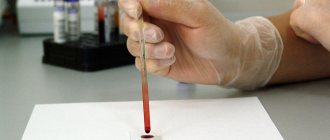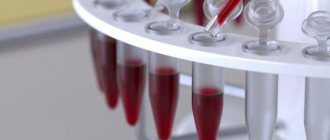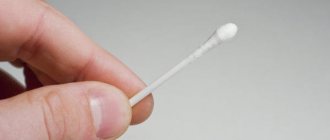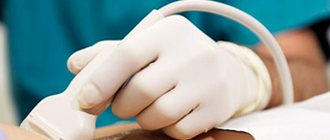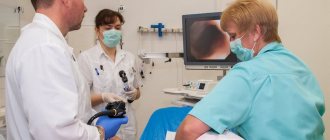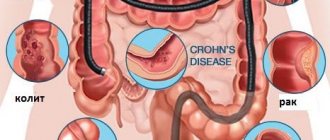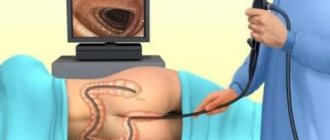To assess general health and diagnose diseases, various methods are used, both invasive and non-invasive. Non-invasive techniques allow us to identify processes occurring inside the body by collecting feces and urine.
One of the most effective and informative ways to diagnose diseases of the gastrointestinal tract is to analyze stool for calprotectin. How this study is carried out, in what cases it is prescribed and what it shows, should be explained to the patient by the doctor who prescribed the procedure.
What is calprotectin
Calprotectin is a special protein that is formed in leukocytes. Doctors define it as protein combined with calcium. It can be found not only in feces, but also in saliva and cerebrospinal fluid. But for medical research, only fecal calprotectin is used, since information about the state of the intestines can be obtained exclusively with the help of this component.
In the body, calprotectin performs the following functions:
- has an antifungal effect;
- prevents the proliferation of pathogenic microorganisms.
When harmful microorganisms and bacteria penetrate tissue, protective proteins move to the site of pathogen penetration, absorb them and then die. Also, during the inflammatory process, the concentration of neutrophils increases, which, when destroyed, lead to the release of calprotectin.
After some time, its presence can be detected in feces. Analysis of stool for calprotectin allows us to identify the amount of protective proteins and draw conclusions about the intensity of the inflammatory process.
Principles of treatment upon detection
If the protein concentration is high, it is necessary to establish the diagnosis and cause of the disease. In most cases, additional diagnostic methods are required: bacteriological examination of stool, colonoscopy or contrast radiography of the intestines.
- For Crohn's disease or nonspecific colitis, sulfasalazines or hormonal drugs are prescribed, and sometimes NSAIDs are used to reduce the activity of inflammation.
- Acute intestinal infections of a bacterial nature are treated with antibiotics; for viral diarrhea, they are limited to rehydration and symptomatic therapy.
- For celiac disease, a lifelong gluten-free diet is prescribed.
In some cases, surgical treatment is resorted to: for tumors, diverticulitis, complications of Crohn's disease.
In continuation of the topic, be sure to read:
- How to use a rapid test from a pharmacy to determine occult blood in stool?
- How to take a stool test for the intestinal group?
- How to take a stool test for Giardia?
- How to take a stool test for helminths and their eggs?
- Details about the coprogram: preparation, conduct and interpretation of the analysis
- How to use a rapid test for rotavirus from a pharmacy?
- How to test stool for pathology at home?
- How to collect feces from a baby: step-by-step instructions
- How to take a stool test for hymenolepiasis?
- How much, how and where can you store feces for analysis: answers to frequently asked questions
Be sure to read:
How is stool tested for enterobiasis (pinworms)?
Indications for use
Most often, doctors prescribe a calprotectin test if they suspect inflammatory and infectious diseases of the gastrointestinal tract. The study is also carried out if the patient complains of constant pain in the abdominal cavity or bleeding. The popularity of the analysis is due to its accuracy and reliability.
Such testing is guaranteed to determine the presence of inflammation or infection. Also, using the analysis, you can determine the effectiveness of prescribed therapy for intestinal diseases and evaluate the course of various diseases, including ulcerative colitis and Crohn's disease.
A referral for a procedure can be issued for the following patient complaints:
- frequent loose stools;
- constant constipation;
- loss of body weight with the same appetite;
- general weakness, deterioration in performance;
- problems with intestinal motility;
- increased body temperature for no apparent reason;
- frequent pain and discomfort in the abdominal cavity;
- blood impurities and mucous discharge in feces;
- frequent nausea.
The advantage of the study is its simplicity and the fact that it is not invasive.
Indications
Determining the level of this protein is necessary to identify the pathological process in the intestine.
- To diagnose Crohn's disease or colitis.
- It can be prescribed during the treatment of an inflammatory disease.
- For the purpose of diagnosing irritable bowel.
- It is recommended that this be done in childhood.
Intestines in Crohn's disease
If the following signs are observed, then analysis is mandatory:
- constant problems with stool (constipation or diarrhea);
- rapid weight loss;
- intestinal dysfunction;
- pain in the gastrointestinal tract and fever;
- the appearance of blood or mucous inclusions in the stool;
- developmental delay in children;
- vomit;
- hyperhidrosis;
- constant weakness.
Determination of calprotectin
What rules should you follow when taking the test?
In order for the analysis results to be accurate and help identify the overall clinical picture, the patient must adhere to the rules that the doctor will tell him about. Otherwise, making a reliable diagnosis will be difficult. Preparation involves following these guidelines.
What does a stool carbohydrate test show?
A week before donating the biomaterial, you must adhere to a special diet, which involves avoiding fatty and fried foods. The patient also needs to minimize salt intake and drink at least 2 liters of water per day.
5 days before collecting the sample, you must stop taking any medications. If the patient is prescribed medication on an ongoing basis, the attending physician should be notified about this.
The sample is collected only in a dry and sterile container; collection can be carried out from any part of the feces, since the protein is distributed evenly throughout all feces. Only naturally obtained biomaterial is suitable for research. It is prohibited to use laxatives or enemas beforehand.
It is recommended to collect feces in the morning, since after waking up the content of cells and substances is at its maximum level. If the bowel movement occurred the night before, the collected sample should be stored in the refrigerator.
It is important to remember that the biomaterial must be delivered to the laboratory no later than 8 hours after collection, otherwise the sample will be unsuitable for research. The test cannot be performed during menstruation or immediately after it, since doctors will interpret red blood cells in the stool as intestinal bleeding.
The best option is to purchase a special container from the pharmacy in advance, complete with a spoon for collecting
Calprotectin in feces: normal
The normal values of this indicator in feces range from 0 to 10 mg/ml. If stool calprotectin levels are within these limits, the patient does not have IBD. The intestinal mucosa is not inflamed. And if the patient continues to complain of intestinal problems and loose stools, this may mean that he has irritable bowel syndrome. Additional studies may be required to clarify the diagnosis.
What can affect the result
The result of a calprotectin test is not always reliable; sometimes testing shows a false positive or false negative result. The following factors can affect the result of the analysis:
- use of systemic anti-inflammatory drugs;
- recent use of acetylsalicylic acid and drugs based on it;
- use of laxatives;
- ignoring the preparatory diet;
- improper collection of feces;
- the presence of hematological diseases accompanied by immunodeficiency.
It is also worth considering that testing may show a false result if the patient brings a sample to the laboratory that has been stored for more than 8 hours. To obtain an accurate result, it is recommended to carry out this analysis twice.
What does fecal calprotectin show?
Calprotectin is a protein produced by neutrophils. Its concentration in feces will be directly proportional to the number of leukocyte cells in the intestine.
In composition, it is a regular protein combined with calcium. Calcium accounts for up to 60% of the composition of calprotectin. Calcium comes from the cytoplasm of neutrophils. During inflammatory processes in the intestines, protein begins to be actively released into the feces from activated neutrophils. At the same time, its level in the biomaterial under study increases significantly.
The inflammatory process in the intestines is most often infectious or autoimmune in nature.
Infectious inflammations include acute intestinal infections (salmonellosis, adenoviral enteritis, rotavirus infection, etc.).
Autoimmune inflammation in the intestines is the result of a dysfunction of the human immune system. This group of inflammatory pathologies includes regional enteritis (Crohn's disease) and nonspecific ulcerative colitis.
People whose families have already had cases of similar pathologies are predisposed to inflammatory bowel diseases. In addition, this group of people has an increased risk of malignant cancer.
Less commonly, inflammation in the intestines is associated with diverticulitis, celiac disease, cystic fibrosis, gastrointestinal bleeding, etc.
Important: the calprotectin test is not specific and sufficient for an accurate diagnosis. However, this simple study makes it possible to carry out a differential diagnosis and exclude irritable bowel syndrome, which has symptoms similar to inflammation.
A general practitioner, pediatrician or gastroenterologist prescribes a comprehensive examination for the patient. After obtaining diagnostic data in conjunction with the clinical picture, a specific pathology is determined.
Symptoms of an increase in the indicator
Inflammatory bowel diseases manifest themselves in the form of various symptoms and depend on the stage of the pathology and the presence of concomitant diseases. The most common of them:
- cramps and pain in the abdominal area;
- impaired motility of the digestive organs;
- frequent constipation and diarrhea;
- stool with mucus or blood;
- uncontrolled weight loss;
- lack of appetite;
- bloating;
- flatulence;
- fever;
- nausea and vomiting;
- general weakness and fatigue;
- joint pain in the absence of high physical activity;
- fistulas and abscesses in the perianal area.
Why is the analysis prescribed?
It is advisable to carry out the study to diagnose inflammation in various parts of the intestine in combination with other instrumental and laboratory diagnostic methods. The test results will help confirm or refute the diagnosis of irritable bowel syndrome.
Despite the fact that this type of laboratory diagnosis is not routine and mandatory for all patients, it should be carried out periodically for prevention for everyone. The study is especially relevant for people with a hereditary predisposition to inflammatory pathologies. This will make it possible to identify the development of pathology at a very early stage and significantly improve the prognosis of the outcome with well-chosen treatment.
Calprotectin standards
After the results form is issued, it is necessary to decrypt it. To do this, it is necessary to compare the information obtained with the norm values. In this way, the patient can independently draw preliminary conclusions about the state of health. But the final diagnosis should be made only by the doctor who ordered the test.
Calprotectin levels depend on the patient’s age and should vary within the following values:
| Age | Norm, mcg/g. |
| Up to a year | Less than 500 |
| From 1 to 3 years | Less than 150 |
| From 4 to 6 years | Less than 50 |
| From 6 to 60 years | Less than 100 |
Decoding indicators
The analysis is carried out using an enzyme-linked immunosorbent assay (ELISA). The laboratory assistant prepares a plate with wells containing antibodies to protein fragments of human calprotectin. A suspension from the patient’s feces is added to these wells, after which the biomaterial is incubated twice.
Be sure to read:
How to use a rapid test from a pharmacy to determine occult blood in stool?
An important stage of the study is washing the wells with peroxidase. Thus, if calprotectin is released in the feces, a chemical reaction will occur (immune complexes are formed), and the solution will change its color - it will turn blue. The quantitative level of fecal calprotectin is determined by the color intensity of immune complexes in the test solution.
Normal protein reference values:
- Newborns - children under one year - less than 500 mcg/g.
- Children 1-4 years old - less than 150 mcg/g.
- Children over 5 years old, adults - less than 50 mcg/g.
- Elderly people (over 65 years old) – less than 100 mcg/g.
If the marker level in an adult is between 50-120 μg/g, a moderate increase in protein is indicated. In this case, after 1.5 months, a repeat study is scheduled to determine the dynamics of the indicator’s growth.
Analysis results
If the analysis result shows a deviation of a couple of units, this does not mean that the person is sick. Doctors pay attention only to significant deviations in the indicator that are observed during acute inflammatory processes. Minor deviations from the norm can be observed with the following violations:
- gastritis;
- intestinal disorder;
- poisoning.
In these cases, the patient is recommended to be tested several times, which can reveal the clinical picture and exclude the presence of a dangerous pathology. A decrease in the indicator is observed only in immunodeficiency, when the production of neutrophil granules sharply decreases. In all other cases, the concentration of calprotectin will be increased.
When is the study scheduled?
How do you know if you need to get tested to determine your stool calprotectin levels? The reasons for contacting the laboratory may be subjective. For example, if you are overcome by discomfort in the abdomen, or when every meal or bowel movement causes discomfort. You can take the test yourself and, with the results, go to a therapist or gastroenterologist. However, most often a doctor prescribes a test for protein in stool if he suspects an inflammatory process in the intestines. The following symptoms may indicate such diseases:
- detection of spasms and disorders of motor function of the gastrointestinal tract in humans,
- pathology of the perinatal area, expressed in the form of abscesses, fistulas,
- bleeding detected in the intestines, severe spotting found in stool,
- irregular stool, mucus found in stool,
- nausea, episodes of vomiting, sudden weight loss, especially in infants,
- pain in the navel or lower right abdominal area,
- increased sweating, fever,
- intestinal obstruction, frequent constipation, arthralgia (pain in the joints without affecting them),
- general weakened condition of the patient, high fatigue.
A gastroenterologist may prescribe a stool test to determine whether calprotectin is elevated, for the purpose of differential diagnosis, to exclude irritable bowel syndrome and the appearance of pain symptoms in the abdominal area due to other causes.
The advantages of such diagnostics
A test that determines a positive reaction to protein in feces is the simplest, least expensive and non-invasive way to detect inflammation in the intestinal area. This stool analysis serves as a beacon for determining the nature of health problems and choosing tactics for further examination.
However, the detection of calprotectin in stool alone cannot serve as a reason for prescribing specific treatment. The results of the analysis only allow us to suspect what the reasons for poor health and negative symptoms lie. If the test results show an increase in calprotectin in the stool, the doctor, based on the clinical manifestations as a whole, will most likely refer you for additional examination. It often includes the following diagnostic procedures:
- coprogram - microscopic examination of stool,
- ANA screening for detection of antibodies to nuclear antiagents,
- examination of feces for occult blood,
- identification of rheumatoid factor,
- general clinical blood test,
- CEA – test for embryonal cancer antigen,
- ESR - conducting a blood test to identify the erythrocyte sedimentation rate,
- highly sensitive test for the quantitative indicator of C-reactive protein,
- determination of the expanded leukocyte formula,
- colonoscopy.
What does it mean if the analysis shows increased calprotectin?
An increase in the indicator is observed when the following pathogens multiply in the intestines:
- rotaviruses;
- salmonella;
- adenoviruses;
- coli.
The toxins released by these pathogens lead to disruption of fecal formation and the development of diarrhea. In addition, with such infections, inflammation of the intestinal walls occurs, which causes its dysfunction.
Other reasons for an increase in the concentration of a component may be:
- celiac disease (deficiency of enzymes that break down gluten);
- cystic fibrosis (damage to the endocrine glands that produce viscous secretions);
- Crohn's disease is an inflammatory process of the intestines;
- congenital anomalies of the intestinal tract;
- ulcerative colitis.
Also, the inflammatory process can be a consequence of damage to the muscular walls of the intestine or the entry of foreign objects with sharp edges into the intestine.
Increased rate
If the protein level does not exceed the permissible norm, then the transcript will show a negative result - there is no inflammatory process in the intestines. A slight deviation from the norm is allowed.
Fecal calprotectin may increase as a result of diseases of the small intestine, gastritis, and lactose deficiency. In this case, the doctor will prescribe treatment and will monitor the intestines.
If calprotectin in the feces is sufficiently increased, then the patient may have the following ailments:
- malignant tumor;
- Crohn's disease;
- ulcerative colitis;
- diverticulitis;
- cystic fibrosis.
When inflammation occurs in the intestines, a large number of white blood cells are sent to the affected area. Calprotectin is released from the cells, so its level in the feces increases.
READ Correct stool test
If the transcript indicates that the protein norm is exceeded, the doctor will refer the patient for additional examination. Among the common ones: screening, stool coprogram, analysis for CEA, ESR, etc.
Video:
You should not try to make a diagnosis yourself based on decoding. A high level of calprotectin does not always indicate pathology.
During an allergic reaction to food, during treatment with certain medications, during hemorrhage, there are many leukocytes in the intestines, increasing the level of calprotectin.
Detailed description
Calprotectin synthesis in feces reflects the influx of neutrophils into the intestinal lumen. Bleeding from the intestinal wall has little effect on the concentration of calprotectin in the stool, and increases its concentration by no more than 10 mcg/g. An increase in the concentration of fecal calprotectin of more than 120 mcg/g is observed in more than 90% of patients with inflammatory bowel diseases at the stage of primary diagnosis.
Detection of fecal calprotectin makes it possible to differentiate patients with irritable bowel syndrome from organic causes of gastrointestinal damage.
The concentration of fecal calprotectin is higher in newborns and children under 1 year of age (exceeds 500 mcg/g), so the determination of calprotectin should be used with caution in children under 4 years of age.
In Crohn's disease Due to low specificity, fecal calprotectin cannot replace instrumental methods for diagnosing Crohn's disease. To a certain extent, the study of fecal calprotectin in combination with stool occult blood reaction and specific complaints allows selecting patients for colonoscopy. An advantage of fecal calprotectin testing in Crohn's disease is that elevated concentrations may reflect segmental involvement of the small intestine, which is inaccessible to endoscopic and histological examination. Since the concentration of fecal calprotectin in stool directly correlates with the histological and endoscopic activity of the disease, persistently elevated levels of fecal calprotectin may indicate the ineffectiveness of therapy; in addition, an increase in calprotectin content over time is observed with an approaching exacerbation of the disease.
Facts about fecal calprotectin: - in children under 1 year of age, calprotectin concentrations are > 500 mcg/g; up to 4 years of age, the normal concentration is about C for 7 days.
Indications for prescribing the test:
— differential diagnosis of organic (inflammatory) changes in the intestinal wall and functional disorders;
— diagnosis of inflammatory bowel diseases;
— monitoring of therapy for nonspecific ulcerative colitis and Crohn’s disease;
— together with a stool test for occult blood (see test description), selecting patients for colonoscopy;
- enteropathy associated with taking NSAIDs.
Reference values:
— the normal concentration of fecal calprotectin is less than 50 mcg/g of stool;
— 50-120 mcg/g – a moderate increase, which requires monitoring over time;
- more than 120 mcg/g - inflammatory bowel diseases.
Increased concentration:
- Crohn's disease and ulcerative colitis;
- bacterial infections of the gastrointestinal tract;
- diverticula; - oncological diseases;
Moderate increase in concentration : inflammatory lesions of the gastrointestinal mucosa (celiac disease, autoimmune gastritis, polyposis, etc.).
The concentration of calprotectin within normal values allows us to exclude inflammatory bowel pathology.
Analysis for fecal calprotectin is prescribed for the development of various intestinal pathologies, which are accompanied by signs of chronic manifestations and frequent relapses. This type of study is considered the most informative, therefore it is often used in the diagnostic examination of patients to establish the causes of the development of inflammatory processes. More details about what fecal calprotectin shows will be discussed in this article.
What does fecal calprotectin show?
If calprotectin is elevated to 1800
When the coprogram shows an excess of the norm to the level of 1800 units, this is considered the maximum possible mark within which laboratory testing can reveal the amount of protein derivatives. There are special reasons for this:
- rejection of cow's milk, presence of allergens in the body;
- increased body weight;
- stomach upset of a viral nature;
- infection of the intestines by pathogenic microorganisms;
- oncological process;
- severe heredity;
- inflammation in the intestines.
Expert opinion
Kovaleva Elena Anatolyevna
Doctor-Laboratory Assistant. 14 years of experience in clinical diagnostic services.
Ask a question to an expert
In some cases, the coprogram gives the wrong result. This can happen if the stool sample is collected incorrectly for testing. Therefore, it is very important to use only a sterile container and bring stool to the laboratory within two hours after the emptying process. If you do not adhere to the established rules, there will be significant errors in the numerical values.

